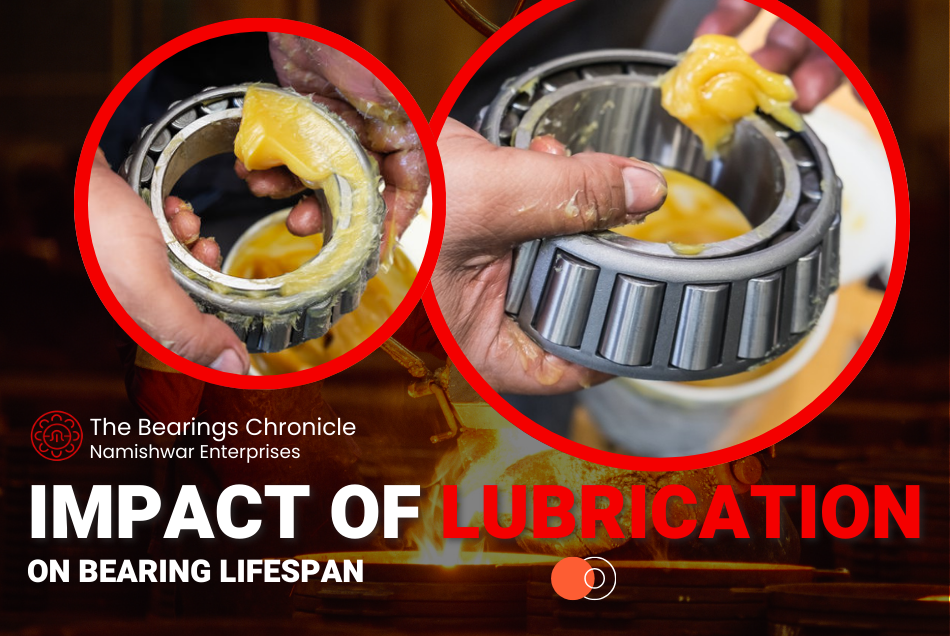Emerging technologies are rapidly transforming many industries, and the bearings industry is no exception. As technology evolves, it brings about innovations that enhance the performance, efficiency, and reliability of bearings. This article delves into how these emerging technologies are revolutionizing the bearings industry, covering smart bearings, additive manufacturing, advanced materials, and more.
Smart Bearings: The Future of Predictive Maintenance
Real-Time Monitoring and Data Analysis
Smart bearings are equipped with advanced sensors that can monitor parameters such as temperature, vibration, and load in real time. This capability allows for predictive maintenance, where potential issues are identified before they result in failure. By continuously collecting data, smart bearings enable the analysis of trends and the detection of anomalies, ensuring that maintenance is performed only when necessary.
Reducing Downtime and Maintenance Costs
Predictive maintenance significantly reduces downtime and maintenance costs. Traditional maintenance strategies often involve periodic inspections and reactive repairs, which can be both costly and inefficient. In contrast, smart bearings provide the necessary data to schedule maintenance activities based on the actual condition of the bearing, optimizing resource allocation and extending the bearing’s lifespan.
Additive Manufacturing: Customization and Complexity
Rapid Prototyping and Cost Efficiency
Additive manufacturing, or 3D printing, allows for the creation of complex bearing designs that were previously impossible to produce. This technology enables rapid prototyping, reducing the time and cost associated with developing new bearings. Engineers can quickly test and refine their designs, accelerating the time-to-market for new products.
Material and Design Flexibility
3D printing offers significant flexibility in both materials and design. Bearings can be manufactured using a wide range of materials, including metals, ceramics, polymers, and composites. This flexibility allows for the production of bearings tailored to specific applications, improving performance and efficiency. Additionally, additive manufacturing enables the production of lightweight bearings with optimized internal structures, beneficial for industries such as aerospace and automotive.
Advanced Materials: Enhancing Performance and Longevity
Ceramics and Polymers
The use of advanced materials is a major factor in enhancing the performance of bearings. Ceramic bearings, made from materials like silicon nitride, offer superior wear resistance, higher temperature capabilities, and better corrosion resistance compared to traditional steel bearings. Polymer-based bearings, such as those made from PEEK (polyether ether ketone), are lightweight, self-lubricating, and resistant to chemicals and moisture, making them ideal for specific applications.
Composite Materials
Composite materials combine the strengths of multiple materials to create bearings with enhanced properties. For example, a bearing might have a metal core for strength and rigidity, combined with a polymer or ceramic outer layer for reduced friction and wear resistance. This combination results in bearings that are optimized for specific applications, providing superior performance and longevity.
Digital Twins and Simulation
Virtual Prototyping and Optimization
Digital twins are virtual replicas of physical bearings that simulate their performance under various conditions. This technology allows engineers to optimize bearing designs and operations without the need for physical prototypes. By simulating different scenarios, engineers can identify potential issues and make necessary adjustments to improve performance and reliability.
Data-Driven Decision Making
The integration of digital twins with real-time data from smart bearings enables data-driven decision making. By comparing the performance of the digital twin with actual data, engineers can fine-tune the bearing’s operation and maintenance schedules. This approach ensures that bearings operate at peak efficiency, reducing the risk of unexpected failures and extending their service life.
Artificial Intelligence and Machine Learning
Predictive Analytics
Artificial intelligence (AI) and machine learning are transforming the way bearings are monitored and maintained. These technologies can analyze vast amounts of data collected from smart bearings to identify patterns and predict potential failures. Predictive analytics allows for more accurate maintenance scheduling and reduces the risk of unexpected downtime.
Optimization and Continuous Improvement
AI and machine learning algorithms can continuously learn from data, improving their predictive capabilities over time. This continuous improvement process ensures that maintenance strategies are always optimized, leading to better performance and lower costs. By leveraging AI, companies can achieve a higher level of reliability and efficiency in their bearing operations.
Internet of Things (IoT) Integration
Connected Bearings
The Internet of Things (IoT) connects bearings to the internet, allowing for real-time monitoring and control. IoT-enabled bearings can communicate with other devices and systems, providing valuable data on their performance. This connectivity enhances the ability to perform predictive maintenance and optimize bearing operations.
Enhanced Monitoring and Control
IoT integration enables enhanced monitoring and control of bearing performance. Maintenance teams can access real-time data from anywhere, allowing for remote diagnostics and troubleshooting. This capability reduces the need for on-site inspections and improves the overall efficiency of maintenance operations.
Blockchain for Supply Chain Management
Transparency and Traceability
Blockchain technology is being explored for supply chain management in the bearings industry. By providing a transparent and immutable record of transactions, blockchain ensures the authenticity and traceability of bearings. This technology can help in tracking the origin and movement of bearings, reducing the risk of counterfeiting and ensuring quality control.
Improved Inventory Management
Blockchain can also improve inventory management by providing real-time visibility into the supply chain. Companies can track the movement of bearings from the manufacturer to the end user, optimizing inventory levels and reducing the risk of stockouts. This transparency ensures that the right bearings are available when needed, improving overall supply chain efficiency.
Robotics and Automation in Manufacturing
Precision and Speed
Robotics and automation are transforming the manufacturing process of bearings. Automated systems can handle the production and assembly of bearings with high precision and speed, reducing errors and increasing productivity. This automation leads to higher quality bearings and lower manufacturing costs.
Customization and Flexibility
Automation also enables greater customization and flexibility in bearing production. Advanced robotic systems can quickly switch between different production tasks, allowing for the efficient manufacture of custom or specialized bearings. This flexibility ensures that companies can meet the specific needs of their customers, improving overall satisfaction.
Nanotechnology: The Next Frontier
Superior Properties
Nanotechnology is an emerging field that is set to revolutionize the bearings industry. By manipulating materials at the nanoscale, it is possible to create bearings with superior properties, such as higher strength, lower friction, and better resistance to wear and tear. Nanotechnology can enhance the performance and longevity of bearings, opening up new possibilities for their use in demanding applications.
Innovative Lubricants
Nanotechnology is also being used to develop innovative lubricants that reduce friction and wear in bearings. These lubricants can provide superior protection compared to traditional options, extending the service life of bearings and improving their performance. By reducing friction, nanotechnology-based lubricants can also enhance energy efficiency, contributing to sustainability efforts.
Conclusion
Emerging technologies are revolutionizing the bearings industry, bringing about significant improvements in performance, efficiency, and reliability. From smart bearings and additive manufacturing to advanced materials and digital twins, these innovations are transforming the way bearings are designed, manufactured, and maintained. As technology continues to evolve, the bearings industry will undoubtedly see further advancements, driving continued growth and innovation.








